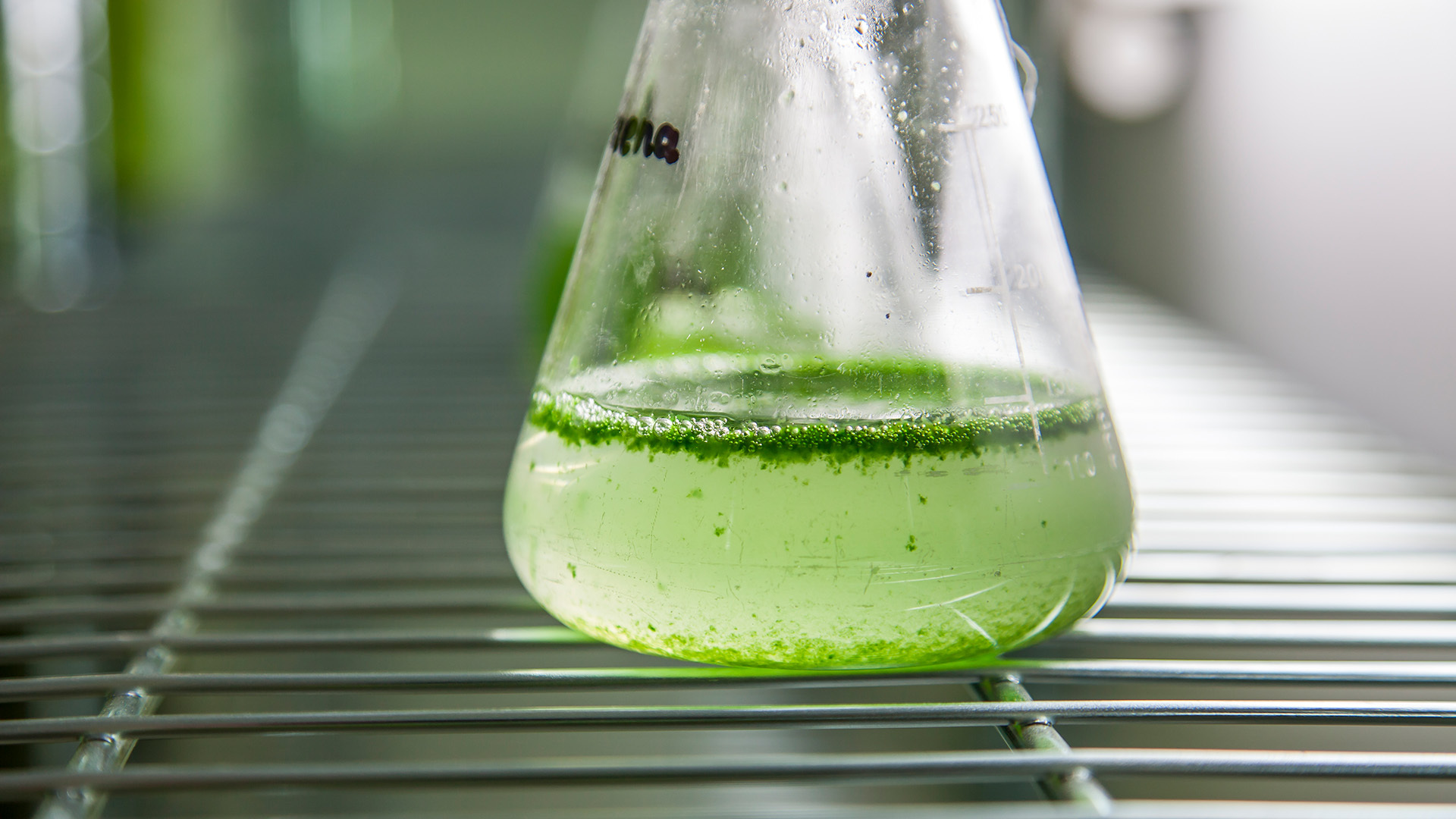
[JACK AYLMER]
THIS POND COULD HOLD THE KEY TO THE CLEANEST SOURCE OF ELECTRICITY ON THE PLANET.
AND IT’S ALL IN THE ALGAE.
RESEARCHERS AT CONCORDIA UNIVERSITY HAS DEVELOPED A WAY OF USING THESE ORGANISMS FOR CREATING CLEAN ENERGY.
TO DO IT, THEY’VE CREATED SUPER SMALL POWER CELLS THAT HARNESS THE POWER OF PHOTOSYNTHESIS.
JUST LIKE HUMANS, ALGAE IS ALWAYS BREATHING.
THE DIFFERENCE IS THAT BECAUSE OF THEIR PHOTOSYNTHETIC MACHINERY, ELECTRONS ARE RELEASED DURING THAT CONSTANT RESPIRATION.
THE CONCORDIA TEAM’S MICRO POWER CELLS CAPTURE THOSE ELECTRONS AS THEY’RE MADE, USING THEM TO CREATE AN ELECTRICAL CURRENT
AND BECAUSE ALGAE IS CONTINUOUSLY OUTPUTTING ELECTRONS IN ORDER TO SURVIVE, THE ELECTRICITY GENERATION NEVER STOPS.
NOT ONLY DOES THIS PRODUCE GREEN ENERGY-
BUT C-O-2 IS ALSO SUCKED OUT OF THE ATMOSPHERE AT THE SAME TIME-
ACTUALLY MAKING THIS TECHNOLOGY CARBON NEGATIVE.
AND THE ONLY BYPRODUCT CREATED AS A RESULT IS WATER.
WHILE THE ENVIRONMENTAL BENEFITS OF USING ALGAE TO PUMP OUT ELECTRICITY ARE EVIDENT-
DOING SO AT A LARGE SCALE WILL TAKE MORE TIME TO DEVELOP.
RIGHT NOW, THESE MICRO CELLS CAN ONLY PRODUCE ENOUGH ENERGY TO KEEP LOW- AND ULTRA-LOW POWER DEVICES RUNNING.
THINK THINGS LIKE SMART WATCHES, BLUETOOTH HEADSETS OR HOME SECURITY SYSTEMS.
BUT, MEMBERS OF THE RESEARCH TEAM AT CONCORDIA SAY THIS TECHNOLOGY HAS BIG POTENTIAL.
PREDICTING IT COULD BE AN AFFORDABLE, CLEAN POWER SOURCE THAT MAY EVENTUALLY COMPETE WITH SOLAR PANELS IN THE FUTURE.
TO GET MORE STORIES LIKE THIS ONE, DOWNLOAD THE STRAIGHT ARROW NEWS APP AND SIGN UP FOR ALERTS FROM ME – JACK AYLMER – SO YOU NEVER MISS A THING.




